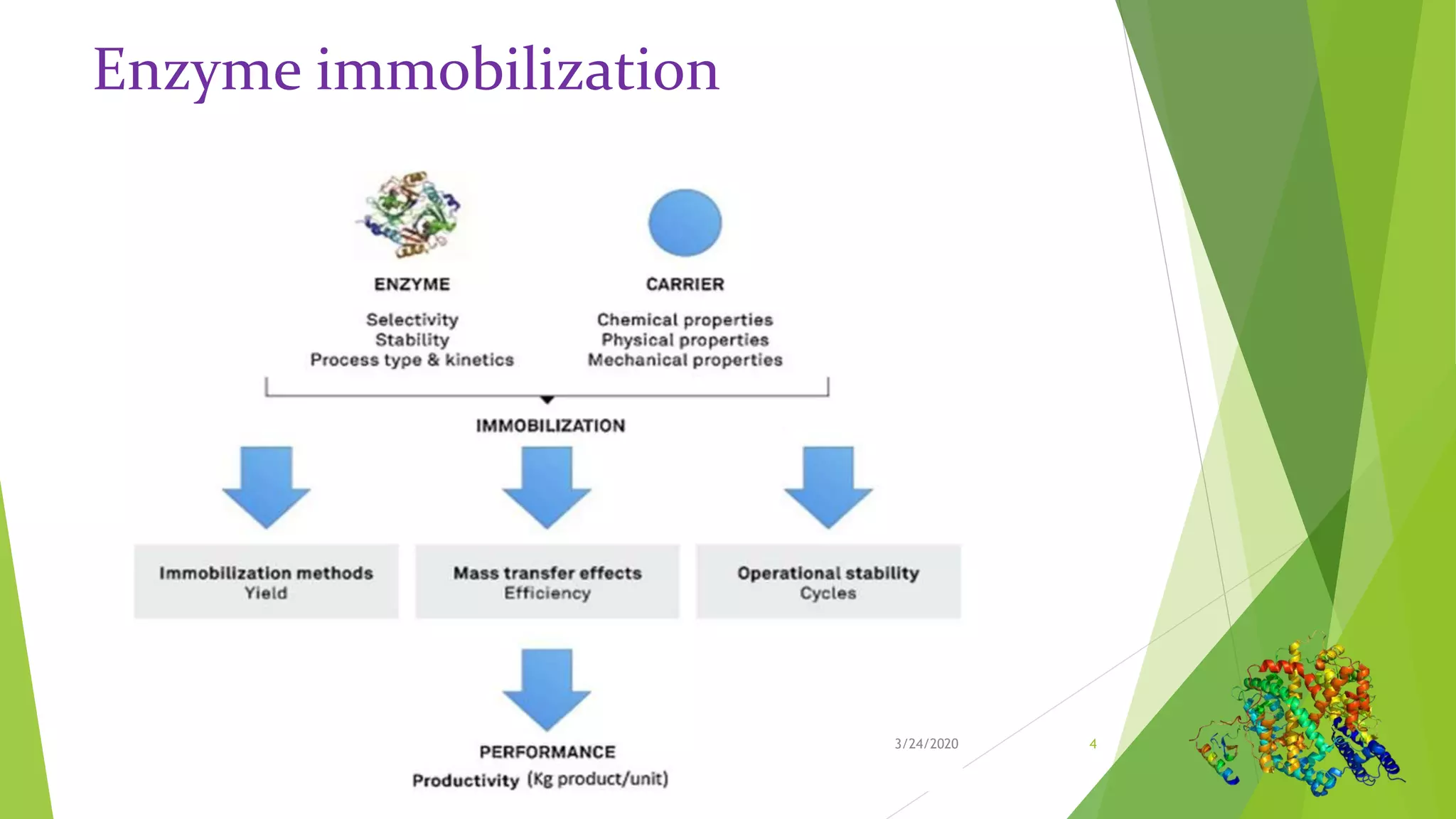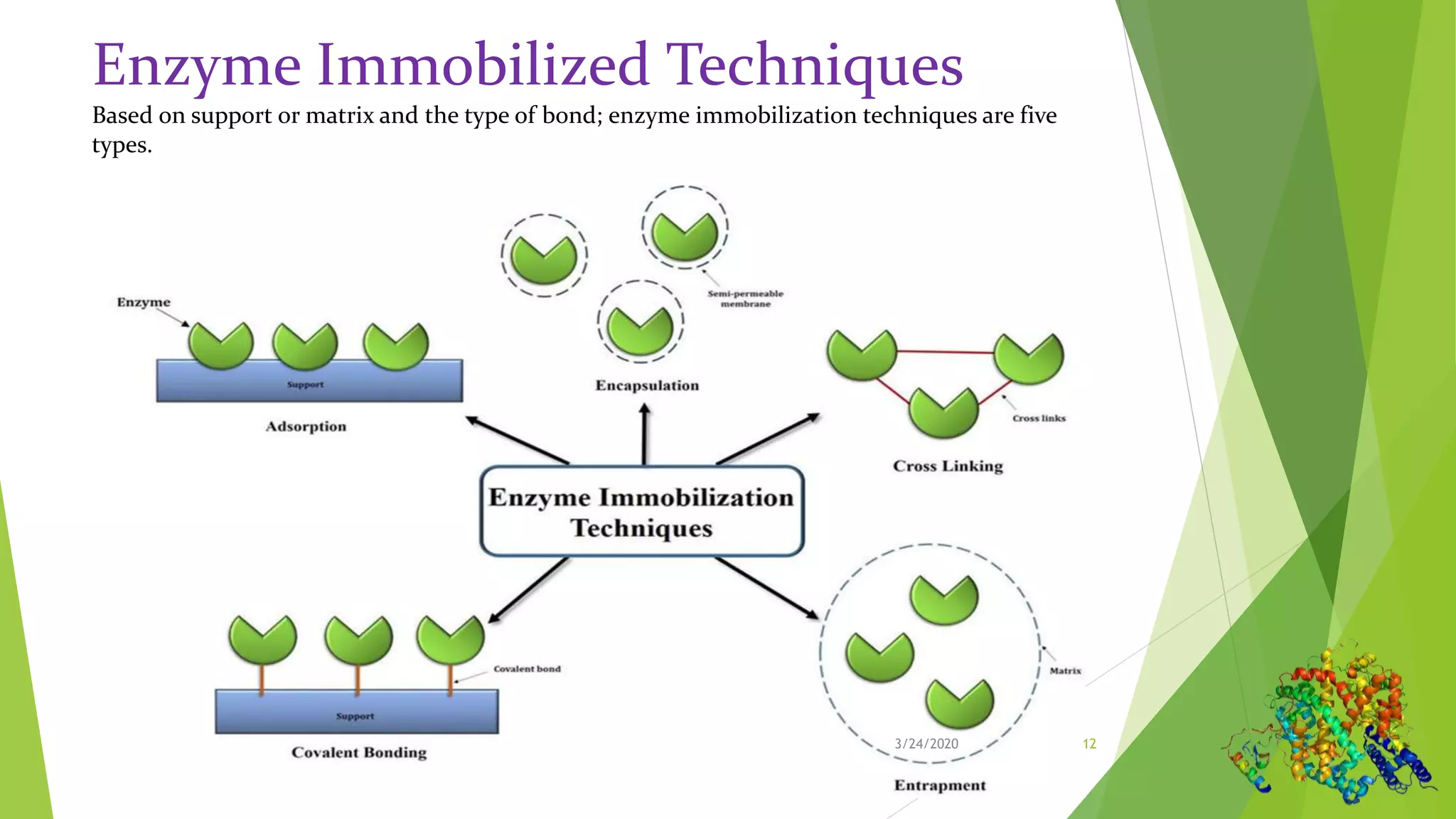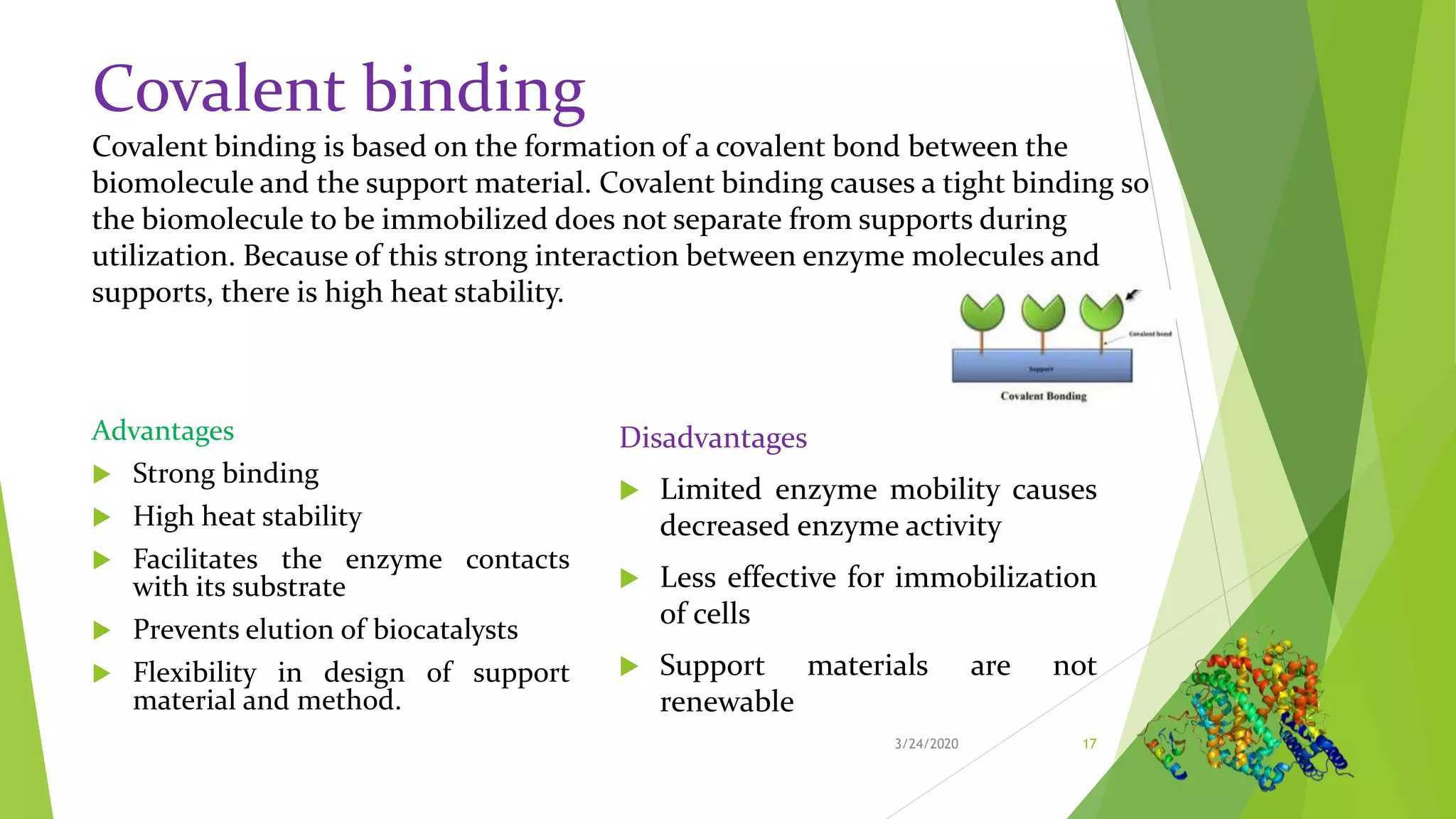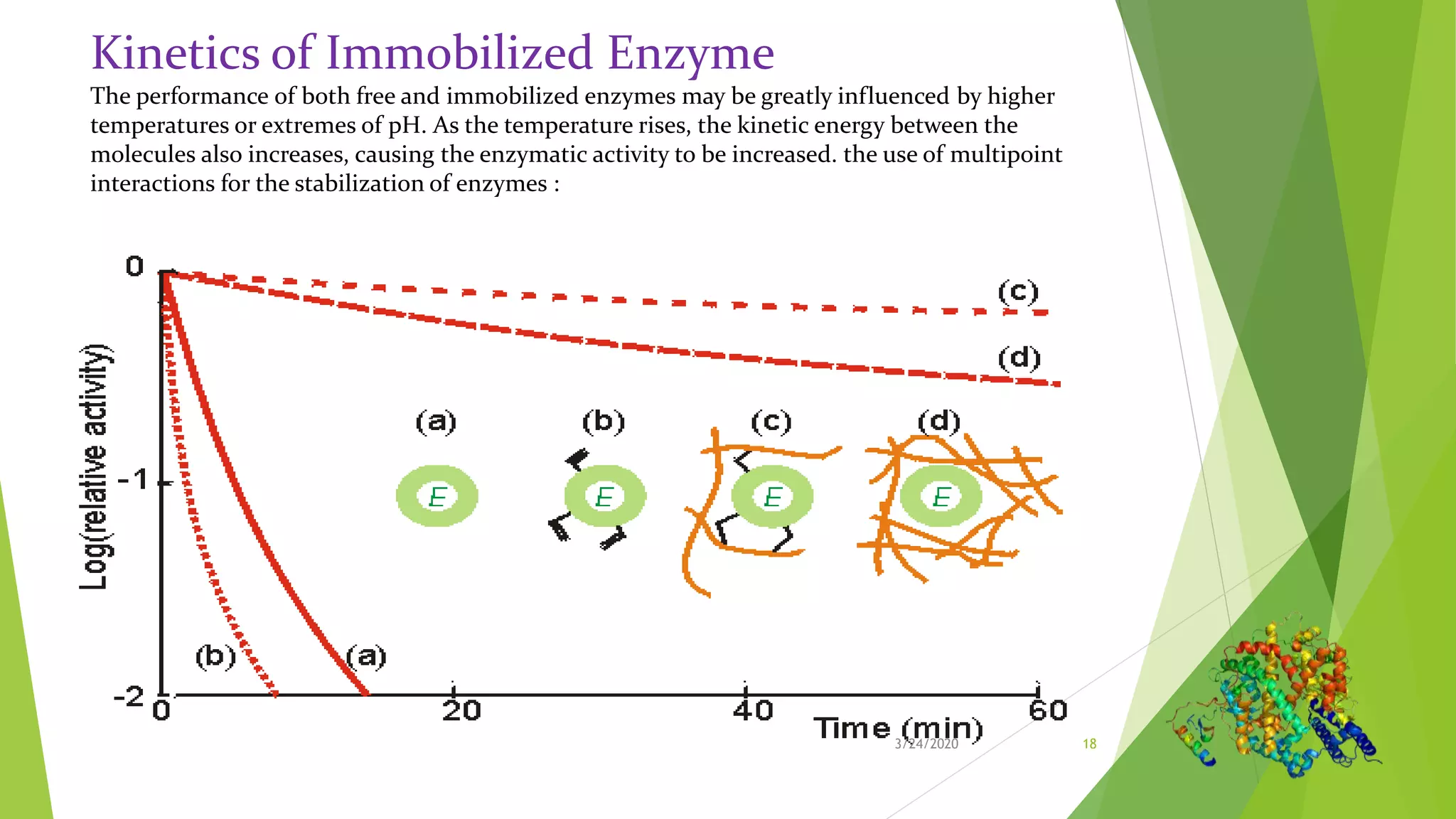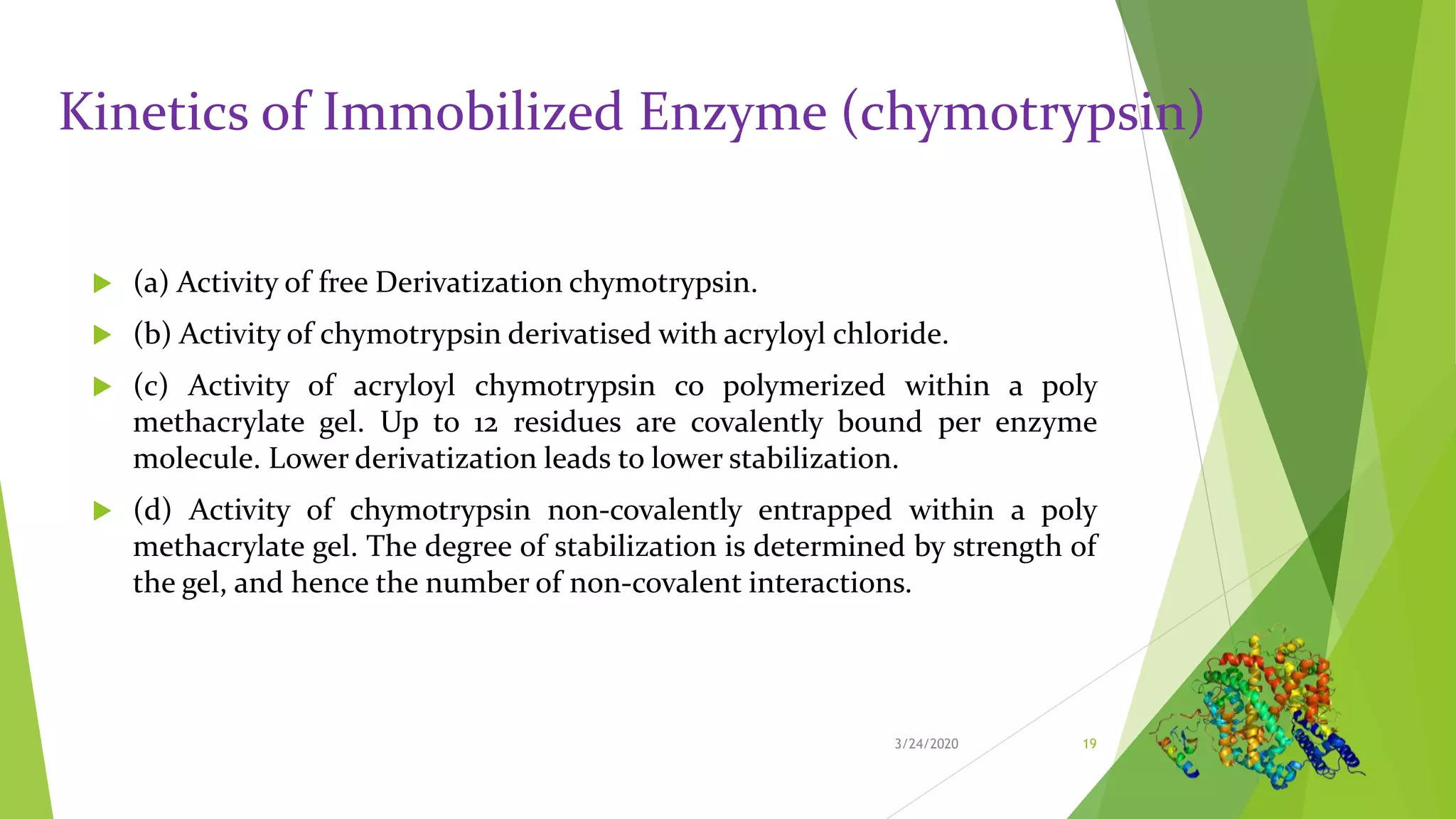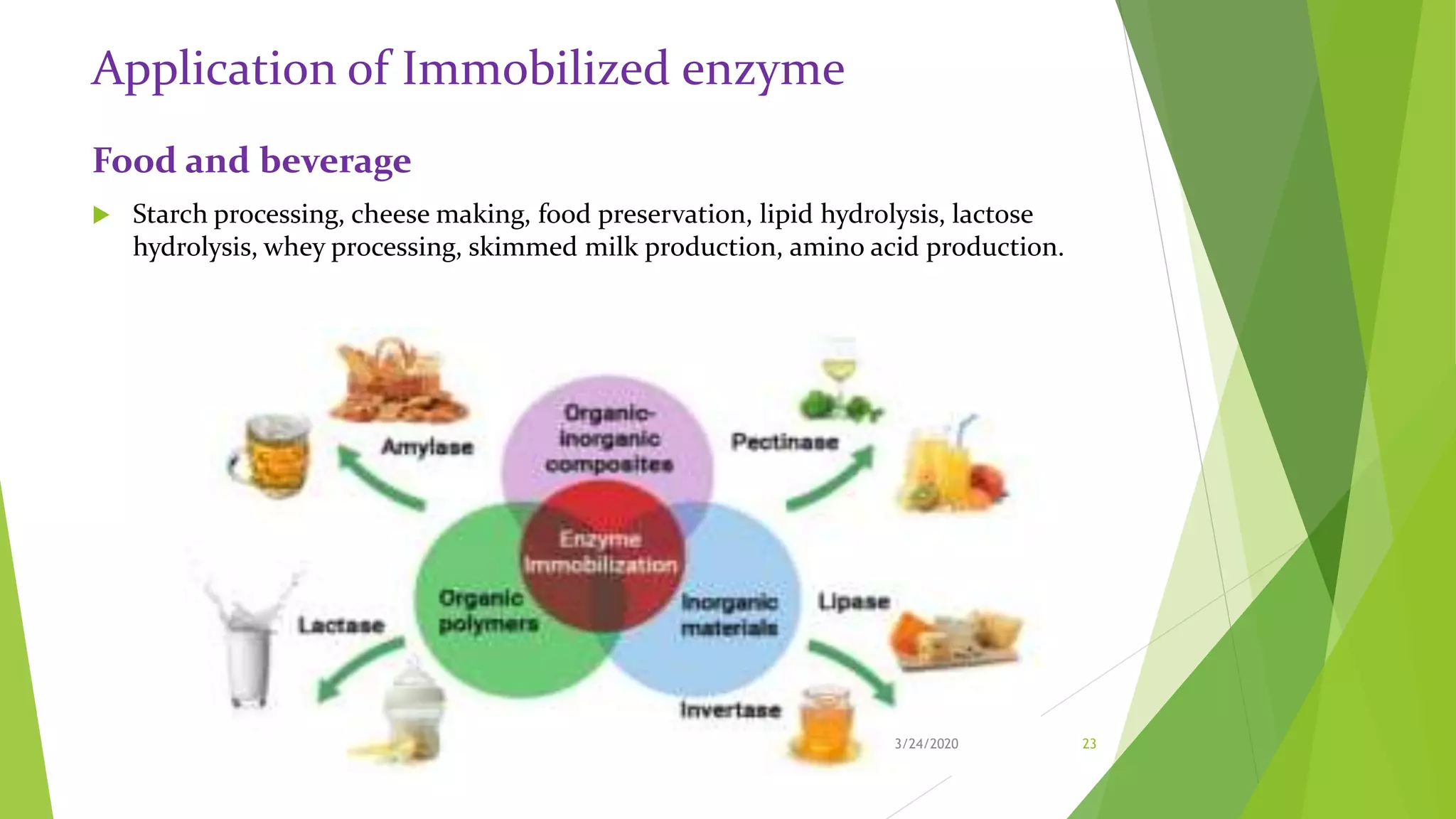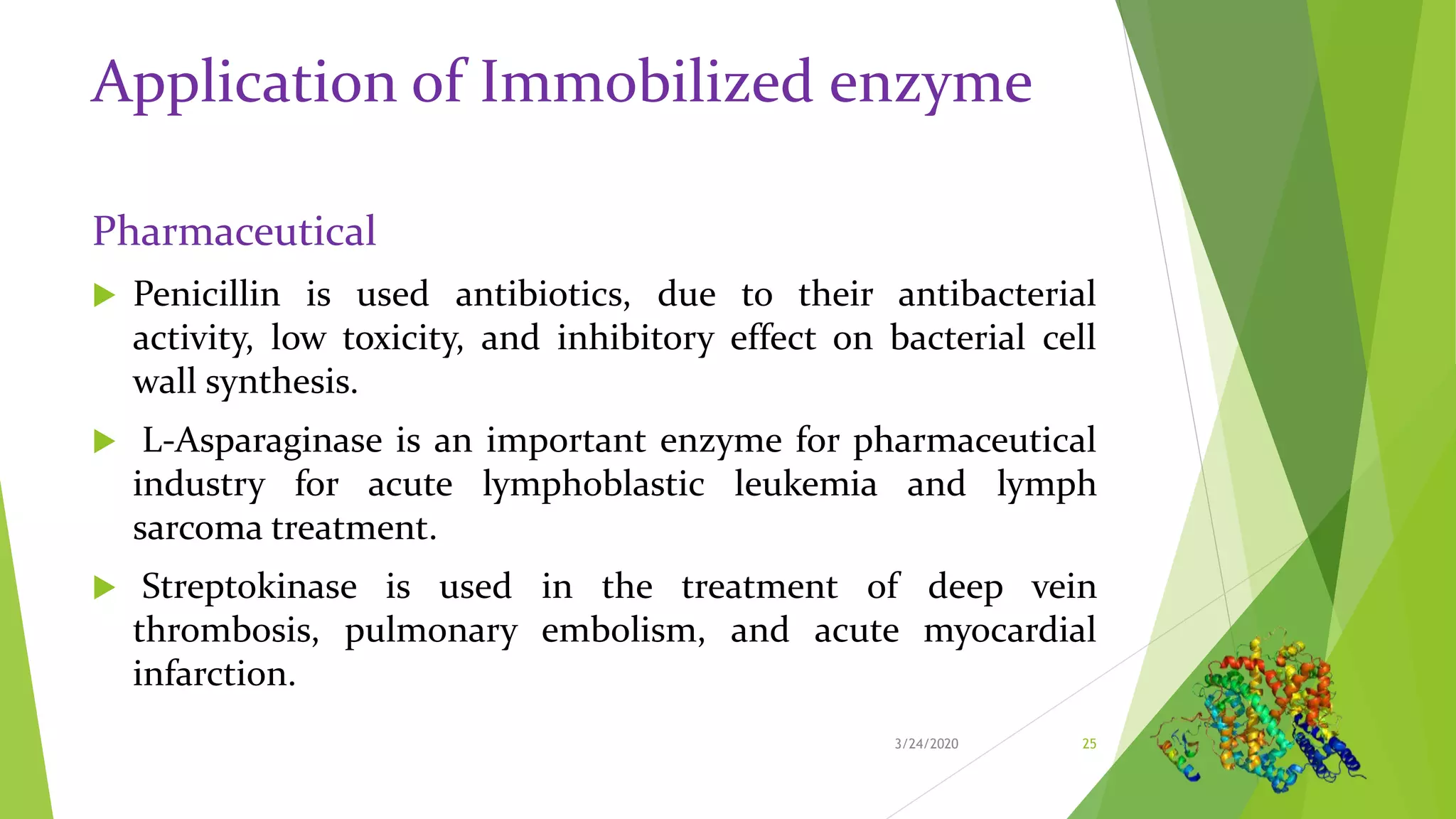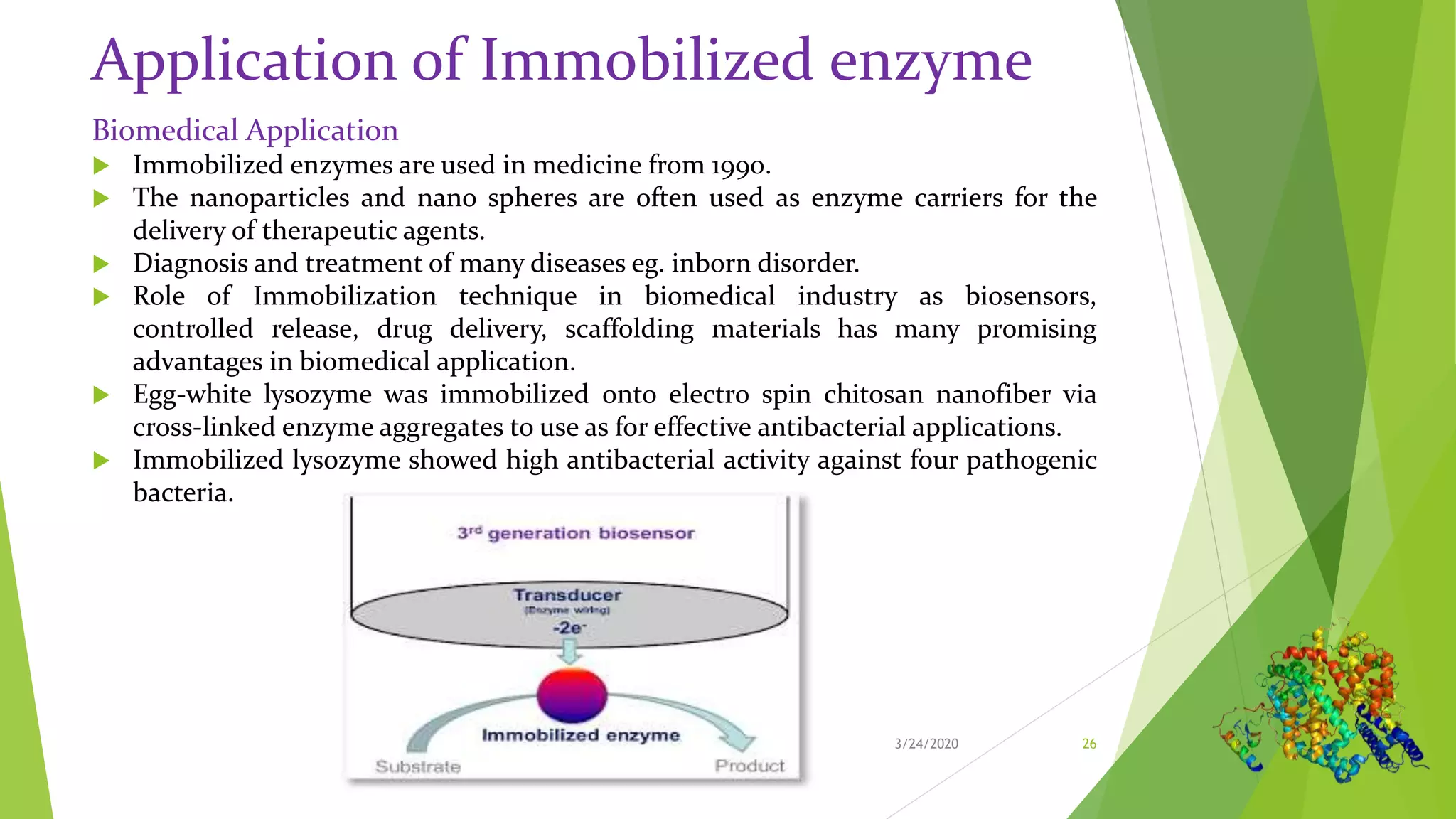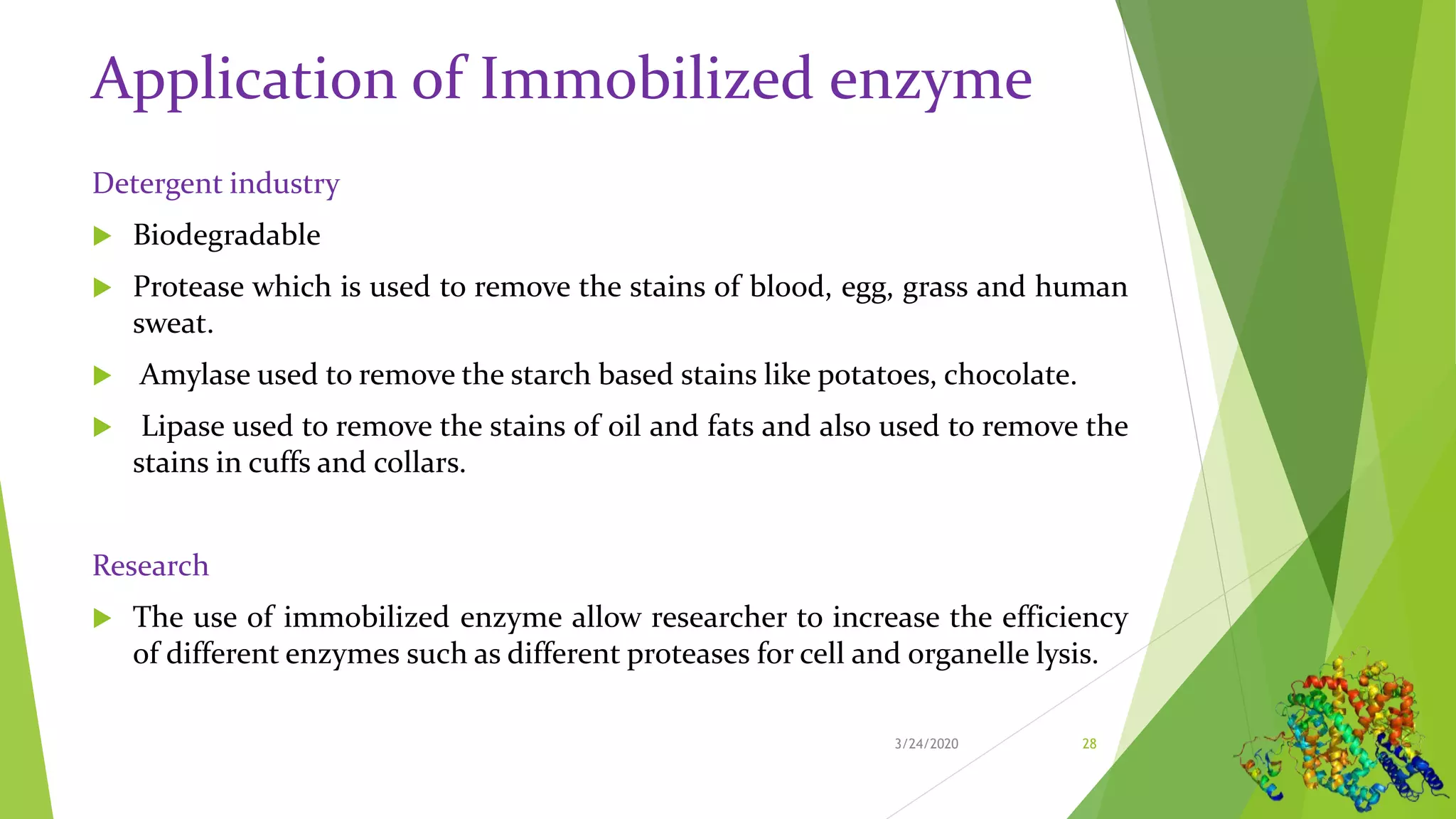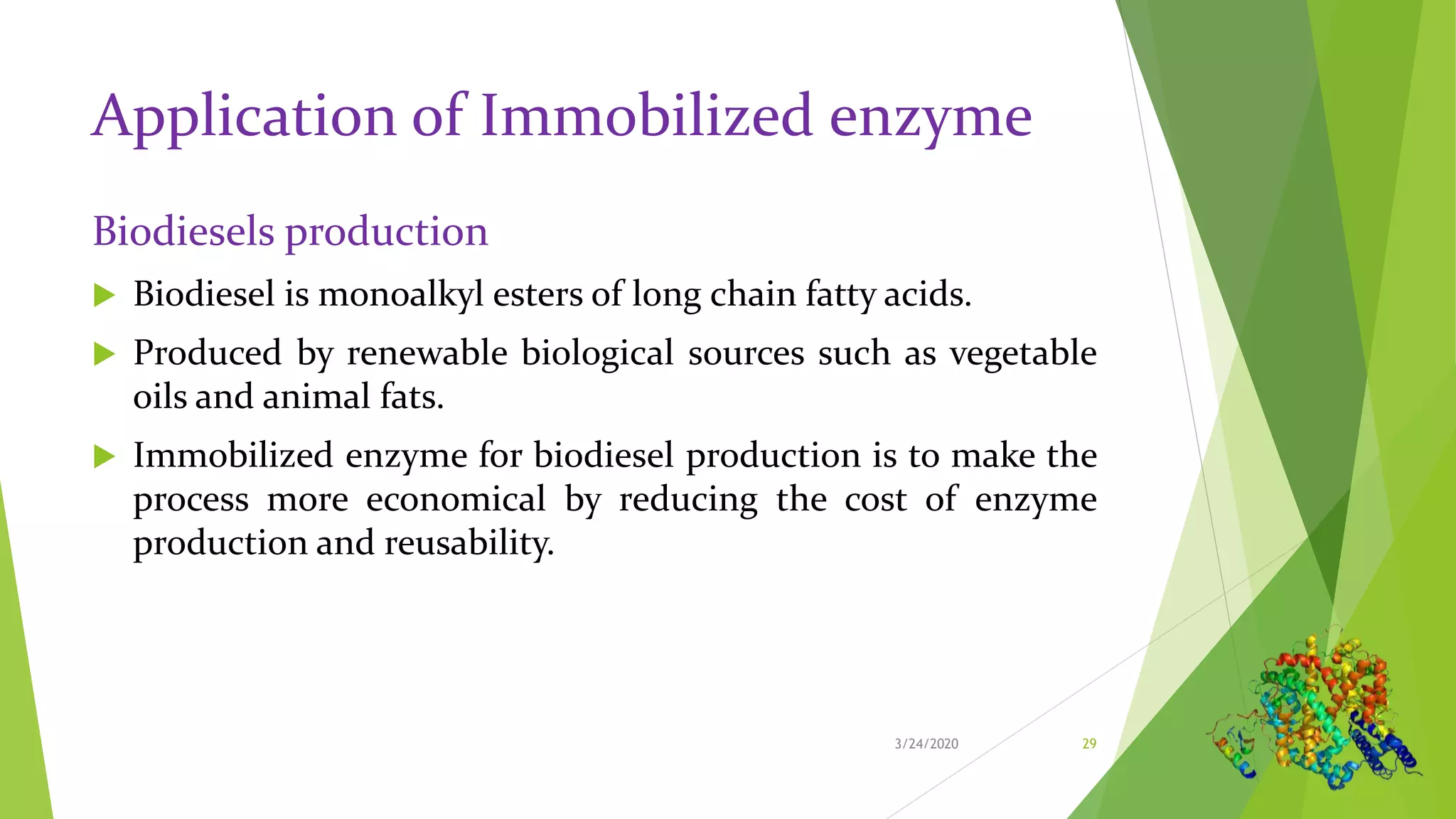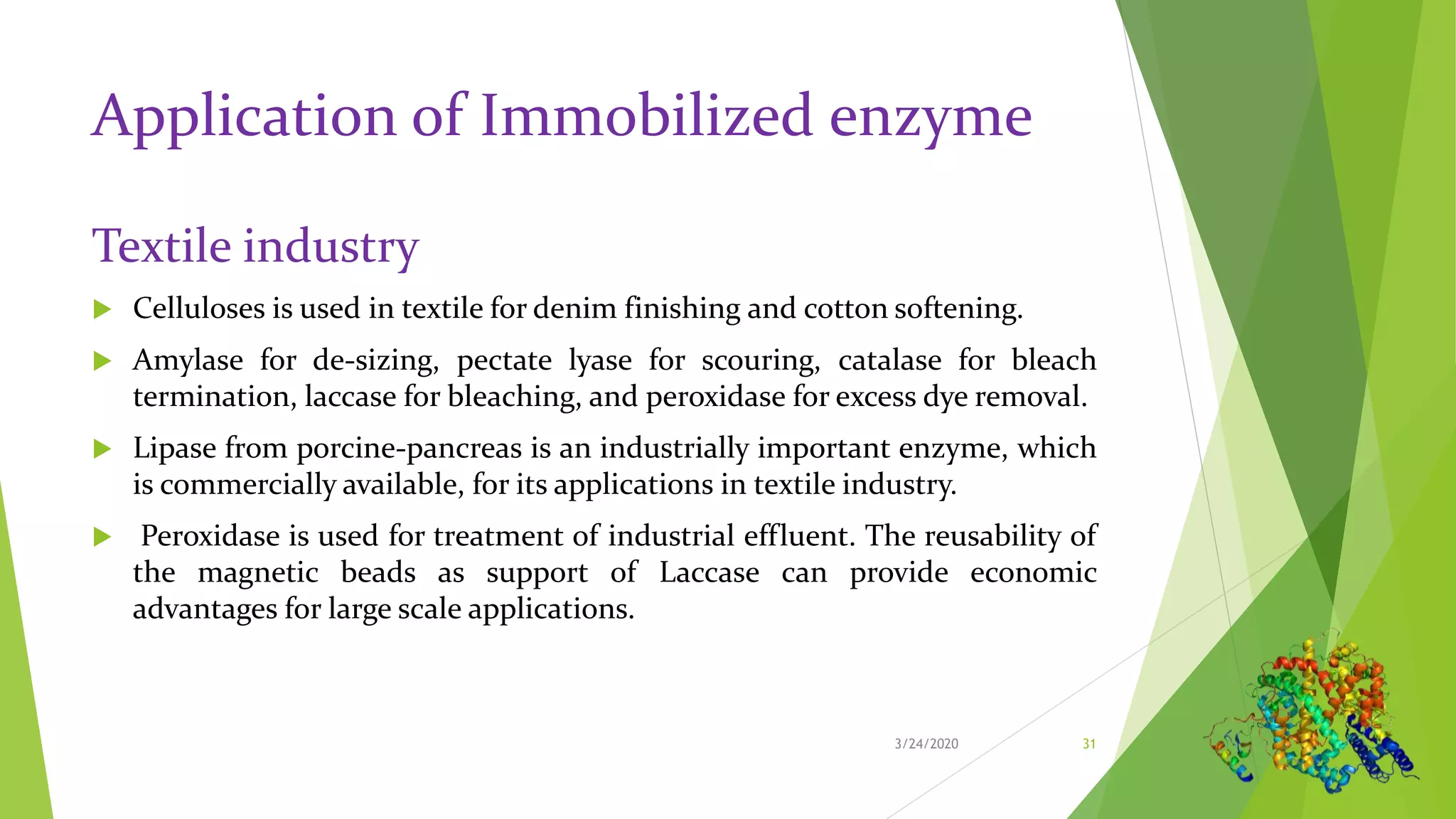The document discusses immobilized enzymes, including definitions, important aspects of immobilization, and reasons for and limitations of immobilization. It describes the components of enzyme immobilization including enzymes, support matrices, and immobilization techniques. The document outlines properties required of support materials and classifications of supports as organic or inorganic. It details various immobilization techniques and provides examples of kinetics, factors affecting production, advantages/disadvantages, and applications of immobilized enzymes in food/beverage, pharmaceutical, and biomedical fields.



